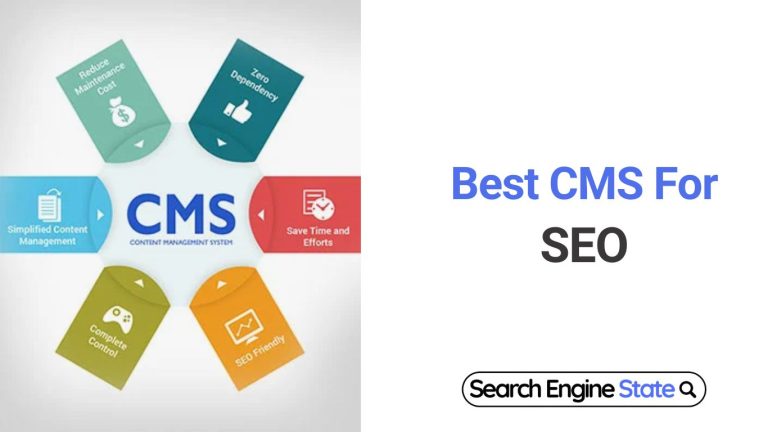Two Keyword Tricks That Seriously Boosted My SEO Game
SEO is chess and winning at this involves having a good understanding of what the keywords are. While there are countless approaches to SEO, two keyword strategies have consistently proven to be game-changers: Latent Semantic Indexing (LSI) keywords and long-tail keywords. When used appropriately, these various techniques prove useful in improving the relevance of the content; drive traffic and increase your Search Engine Rankings. I’ll be explaining these Two Keyword Tricks That Have Seriously Boosted My SEO Game.
1. Latent Semantic Indexing (LSI) Keywords: The Power of Context
What Are LSI Keywords?
They are secondary keywords or phrases, which somehow describe your main focus keyword. This is most helpful to the search engine as it gives it a lead on the overall topic of the content that is being provided. For instance, if you’re using your keyword phrase as digital marketing, some of your LSI keywords might be SEO techniques, content promotion, or internet advertising.
Why LSI Keywords Matter for SEO
- Improved Content Relevance: To Google, other search engines and website crawlers, LSI keywords are used to evaluate the extent and quality of your content. Including related terms also impacts your search in the sense that you offer more proactively directed postings in return to the user’s questions.
- Avoid Keyword Stuffing: High keyword relevance and excessively frequent use of a particular keyword results in penalties. Some of the benefits are as follows: LSI keywords can help diversify your language without holding the topic by the scruff of the throat.
- Enhanced User Experience: When the content is written with the inclusion of the LSI keywords the text is considerably more natural and focused on a real person’s conversation, increasing the text’s readability.
Case Study
When working on a content project for an e-commerce client, I identified that their product pages lacked depth and relevance. For example, a page specially created to rank for ‘men’s running shoes’ focused mostly on this particular keyword and, consequently, stuffed the page with the keyword and hence, made it hardly readable.
What I Did:
- Used Google’s related searches to research LSI keywords and other options such as LSIGraph.
- Identified terms like “breathable running shoes,” “best shoes for jogging,” and “lightweight athletic footwear.”
- Used these LSI keywords in product descriptions, meta tags, header section, etc.
The Outcome:
- The page’s bounce rate dropped by 15% as users found more comprehensive and helpful content.
- Organic traffic increased by 30% within three months, with more pages ranking for related queries.
“Ready to take your traffic to the next level? Leverage our expert SEO services to achieve measurable results and sustainable growth. Contact us today and let’s optimize your way to success!“
How to Find LSI Keywords
- Google’s “Related Searches”: Enter your main keyword like: “Healthy Eating” into Google and scroll to the bottom of the search results page to find related terms.
- LSI Keyword Tools: It is possible to use LSIGraph or KeySearch to produce a list of LSI keywords related to your topic.
- Autocomplete Suggestions: After entering your keyword, look at the suggestions pulled by Google as they give an insight on which topic the majority of individuals are interested in.
How to Optimize LSI Keywords
- Naturally Integrate Them: Use LSI words in headings, subheadings and the article body if you find them relevant.
- Optimize Meta Tags: Of course, they should be utilized in meta titles, descriptions, and image alt texts.
- Answer Related Queries: Incorporate LSI keywords as an answer to the secondary, supporting or additional questions connected with the topic of the content you create.
Example:
Primary Keyword: “Healthy Eating”
LSI Keywords: “balanced diet,” “nutritious meals,” “weight loss tips,” “meal planning.”
Content Snippet:
“Healthy eating involves more than just cutting calories. A balanced diet with nutritious meals can support your weight loss goals while ensuring long-term health benefits.”
2. Long-Tail Keywords: Targeting Specific User Intent
What Are Long-Tail Keywords?
Long-tail keywords are longer, more-specific keywords of more than two words, or even three or more words. These keywords often reflect detailed user intent, such as “best vegan recipes for weight loss” instead of just “vegan recipes.”
Why Long-Tail Keyword is Important for SEO
- Lower Competition: As it is with any keyphrase, and in particular, long-tail keywords, it is easier to rank in a search engine for such a term than for a more general one.
- Higher Conversion Rates: Most of these keywords are usually used by users who are in advanced stages of the buying process or have made their decision on what they want so conversion rates are high.
- Better Alignment with Voice Search: Since voice search is now trending, the long-tail fits the proper way people use when they speak.
Case Study
A healthcare client was struggling to compete for high-volume keywords like “weight loss.” Despite significant content investments, their rankings remained low due to intense competition.
What I Did:
- Shifted focus to long-tail keywords by analyzing user queries through Google Search Console.
- Created content targeting specific phrases like “best diets for postpartum weight loss” and “how to lose weight with hypothyroidism.”
- Optimized blog titles, headers, and FAQs with these long-tail keywords.
The Outcome:
- These niche articles quickly ranked on the first page for several long-tail queries, driving 60% more organic traffic within three months.
- Conversion rates improved by 25% as the content aligned more closely with user intent.
How to Find Long-Tail Keywords
- Answer the Public: This tool produces questions, comparisons, prepositions related to your keyword which in turn shows you what the user wants.
- Google Analytics and Search Console: Review your logs and consider the other long-tail keyword variations people type to reach your website.
- Quora and Reddit: Visit these sites to see exact expressions employed in the discourse of your area of interest.
How to Use Long-Tail Keywords Effectively
- Create Niche Content: Create Web pages or individual articles with sole focus on long-tail keywords.
- Address User Questions: Frame your content around questions users are likely asking, using the keywords naturally.
- Cluster Topics: It is important to use all related long-tail keywords in a single post, when dealing with a particular topic.
Example:
Short Keyword: “Running Shoes”
Long-Tail Keyword: “Best running shoes for flat feet 2025”
Content Snippet:
“Finding the best running shoes for flat feet can be challenging. In 2025, brands like XYZ offer excellent arch support and cushioning for runners with flat feet.”
Combining LSI and Long-Tail Keywords for Maximum Impact
Each of these techniques itself is very useful but the combination of them is truly magical.
Step-by-Step Strategy:
- Identify a Long-Tail Keyword: Most saturated niches have a lot of competition, so type your topic in SEMrush or Ahrefs to find the best long-tail keyword.
- Generate LSI Keywords: To create a list of support keywords take help of LSIGraph or Google related searches.
- Create Structured Content: In order to make proper title and structure for your article, use LSI keywords and arrange headings and subheadings based on the main long-tailed keywords.
- Optimize for On-Page SEO: Make both types of keywords to be placed within meta tags, headers, alt texts and internal linking.
Example of Combined Strategy:
Long-Tail Keyword: “Affordable family vacation spots in Florida”
LSI Keywords: “budget travel,” “family-friendly activities,” “Florida beaches,” “theme parks.”
Content Structure:
- Introduction: Why Florida is perfect for affordable family vacations.
- Section 1: Top budget travel tips for families.
- Section 2: Best Florida beaches for family-friendly activities.
- Section 3: Affordable theme parks in Florida for kids.
Key Lessons Learned
Why These Tricks Work
- They Align with Search Engine Algorithms: Algorithms of Google are aimed at selecting such articles that can be considered relevant to a topic and contain a necessary amount of information. These include; LSI and long-tail keywords.
- They Meet User Intent: The techniques used in content creation provide solutions to user needs which enhances the engagement frequency such as time spent on page as well as click through rates.
- They Reduce Competition: Long tail keywords seem to work better as they do not compete directly with generic keywords which are highly saturated with traffic.
Common Mistakes to Avoid
- Overloading Content: Don’t overuse LSI keywords to the point where your content feels forced or unnatural.
- Neglecting Intent: Ensure long-tail keywords align with user intent and provide actionable solutions.
Conclusion
While SEO is not as simple as keyword adding to the content, it is as simple as serving user intent. When you use LSI keywords and Long-tail keywords you will be in a position to develop content that will not only be highly relevant but also one that has high chances of being ranked and make your readers or visitors make customers. If you want to take your SEO to the next level, use these strategies today!





